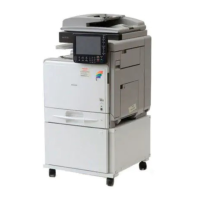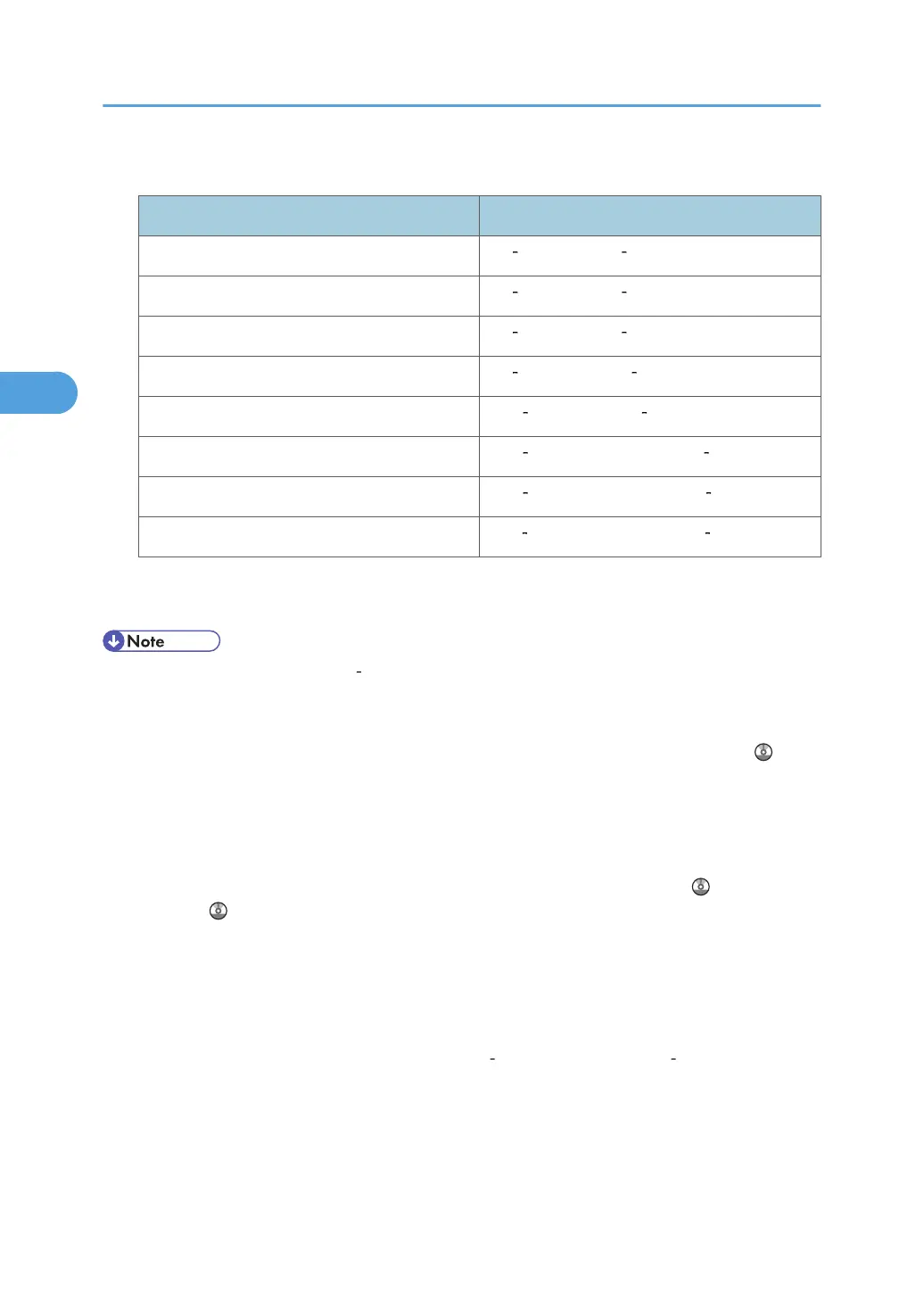Paper Thickness
Paper Thickness
*1
Paper weight
Thin Paper 52 60 g/m
2
(14 16 lb. Bond)
Plain Paper 1 61 80 g/m
2
(16 20 lb. Bond)
Plain Paper 2 81 90 g/m
2
(20 24 lb. Bond)
Middle Thick 91 105 g/m
2
(24 28 lb. Bond)
Thick Paper 1 106 130 g/m
2
(28 35 lb. Bond)
Thick Paper 2 131 163 g/m
2
(35 lb. Bond 90 lb. Index)
Thick Paper 3 164 220 g/m
2
(90 lb. Index 80 lb. Cover)
Thick Paper 4 221 256 g/m
2
(80 lb. Cover
140 lb. Index)
*1
Print
quality will decrease if the paper you are using is close to the minimum or maximum weight. Change
the paper weight setting to thinner or thicker.
• When loading paper in trays 1 4, place the print side up. When loading paper in the bypass tray,
place the print side down.
• When
using translucent paper or label paper, make sure to select the appropriate paper type under
Paper Type: Bypass Tray. See “System Settings”, Network and System Settings Reference
.
•
Certain types of paper produce noise when delivered. This noise does not indicate a problem and
print quality is unaffected. (Glossy paper and OHP transparencies can produce noise when
delivered.)
• When you load OHP transparencies, check the front and back of the sheets, and place them correctly,
or a misfeed might occur. For details, see Copy and Document Server Reference
, and Printer
Reference .
•
When you use OHP transparencies, fan them for each use.
• We recommend that you use a 4000 ANSI lumen or brighter overhead projector to project OHP
transparencies.
• When copying or printing onto OHP transparencies, the copy/print speed is slower than usual.
• When copying or printing onto thick paper of 106
256 g/m
2
(28 lb. Bond 140 lb. Index), the
copy/print speed is slower than usual.
•
Flatten out curled sheets before loading them.
• If multiple sheet feeding occurs, load sheets one by one.
3. Adding Paper
92

